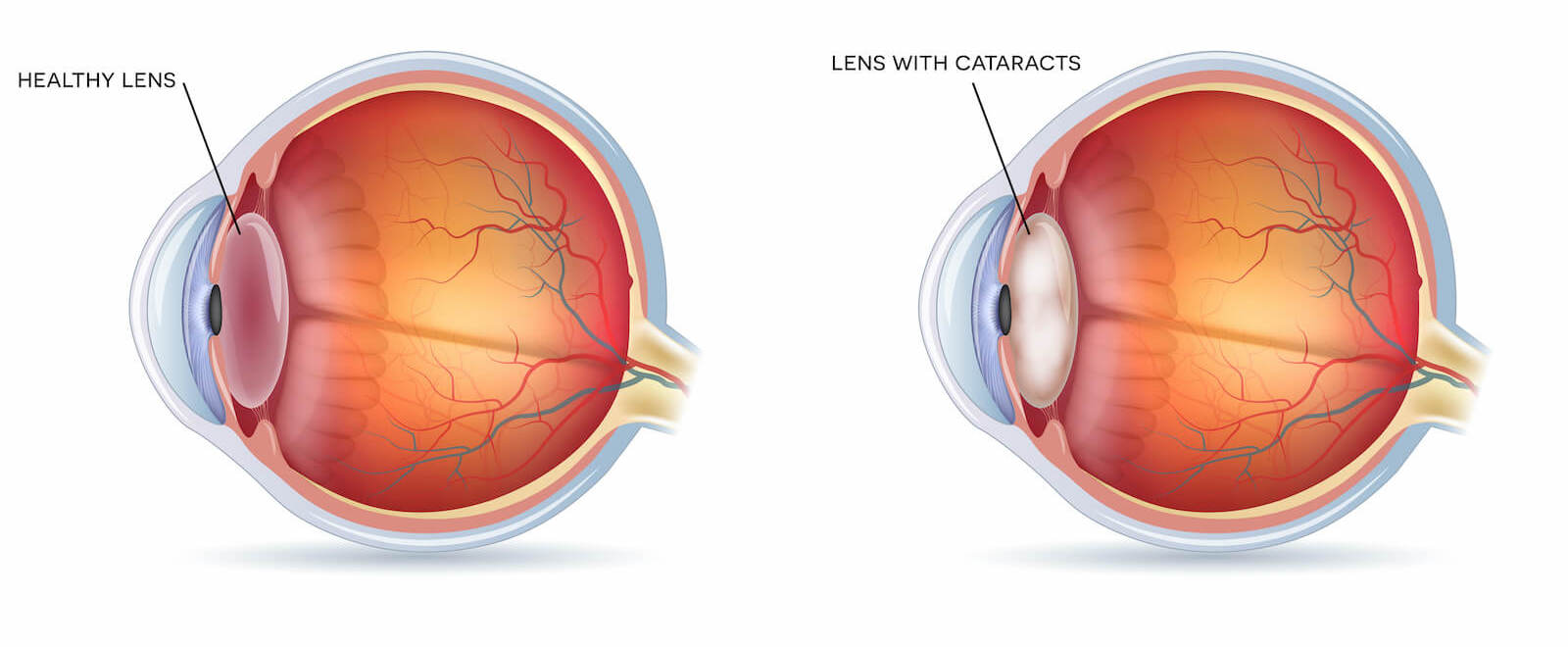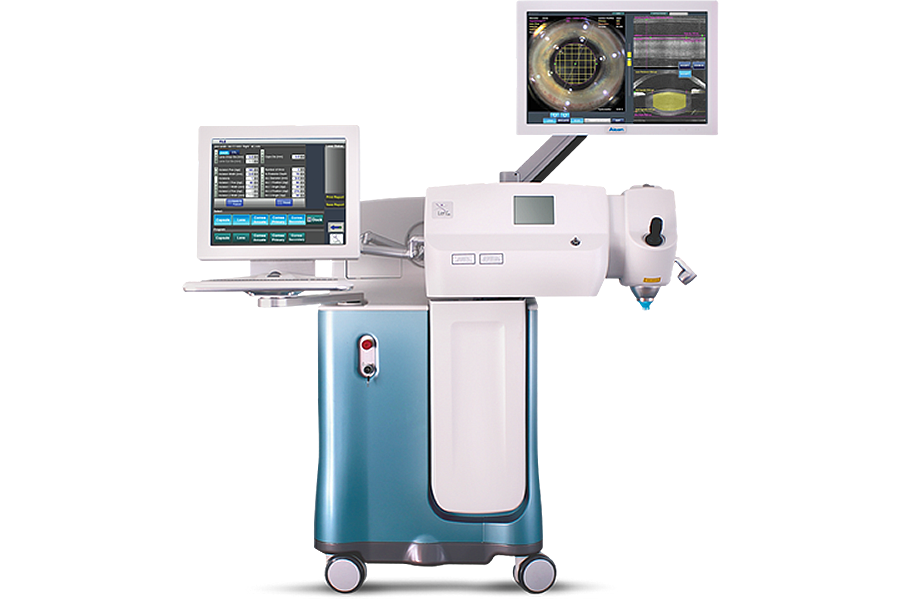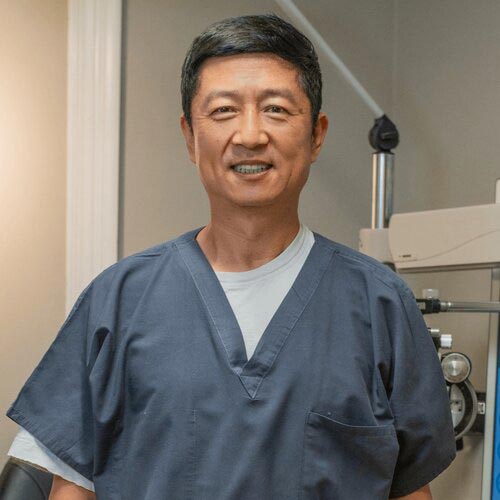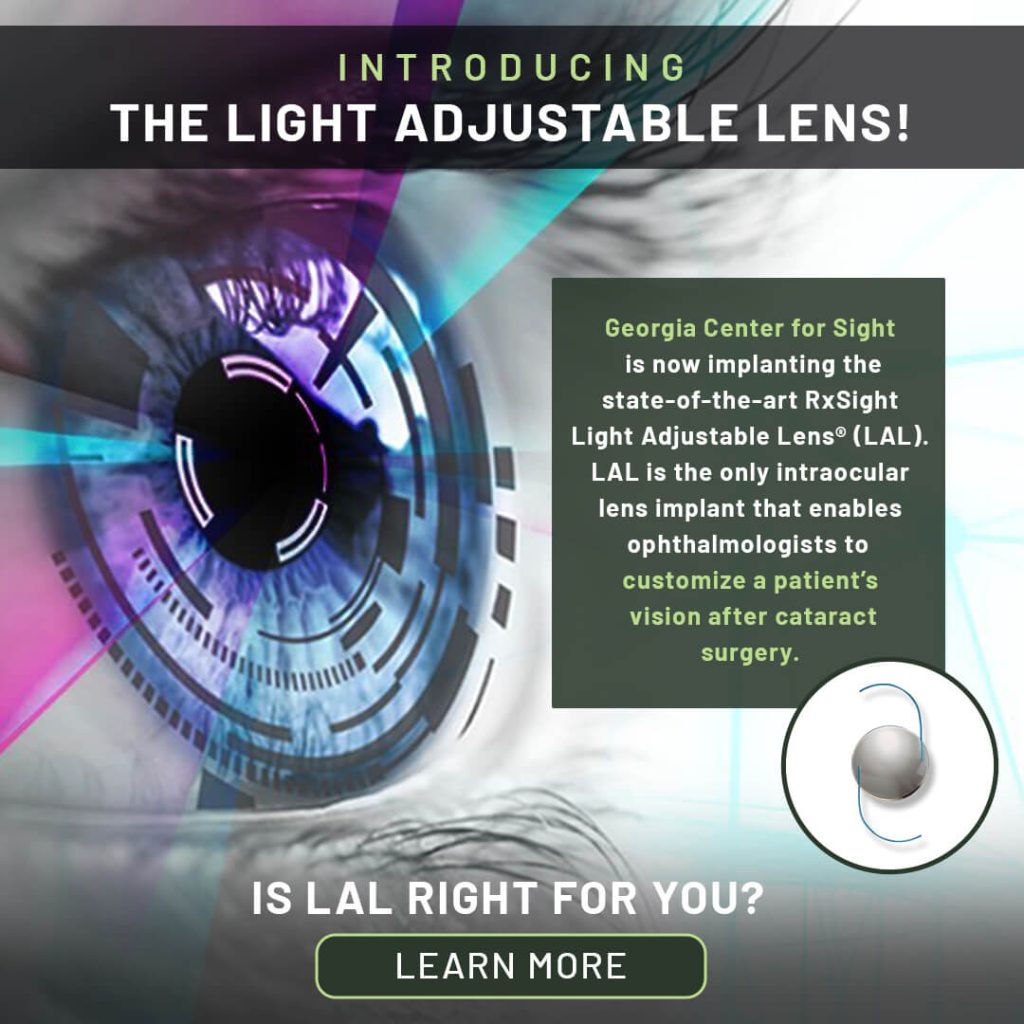Cataracts
Cataracts are a natural part of the aging process within the eye. At Georgia Center for Sight, Dr. Dong has the experience and knowledge necessary to monitor your cataracts and perform cataract surgery to restore your vision!
What Are Cataracts?
Cataracts are the leading cause of poor vision in adults. They occur when a chemical composition change occurs in the lens, causing it to become cloudy and result in poor vision. As you age, proteins inside your eye’s natural lens begin to break down and form clumps. These clumps block light from reaching your retina and cause blurry vision.
Cataracts typically develop gradually, so you may not notice symptoms right away. However, over time, cataracts will begin to cause many bothersome symptoms that can inhibit your ability to perform daily tasks.
Once cataracts begin to interfere with your everyday routine, your eye doctor will recommend cataract surgery. Cataract surgery is a safe and effective way to eliminate the unwanted visual symptoms caused by cataracts and correct your natural refractive error.

Most Common Symptoms of Cataracts
Cataract symptoms can vary from person to person, depending on various factors, including the type of cataract each person has. The most common symptoms of cataracts include:
It’s important to note that other eye conditions may also cause these symptoms, so it’s best to consult your eye doctor if you are experiencing any changes in your vision.
Cataract Symptom Checker






Are You a Good Candidate for Cataract Surgery?
Take our Cataract Self-Test and find out.
Best Treatment For Cataracts
Since cataracts cannot be treated with medication, the only treatment option is the surgical removal and replacement of the cloudy lens. At Georgia Center for Sight, cataract surgeons perform all cataract removal procedures using a no-needle, no-stitch, small, clear corneal incision technique.
This allows them to provide minimal tissue disturbance and facilitate a faster recovery time. Insurance companies cover cataract surgery if your vision is too blurred to enjoy your lifestyle. Your cataract surgeon will remove the aged lens and replace it with an intraocular lens. You can expect superior postoperative vision by having your cataract surgery at Georgia Center for Sight.
At Georgia Center for Sight, Dr. Dong uses a variety of new technology that allows most patients to function without glasses for both distance and near vision after cataract surgery.
What is Laser Cataract Surgery?

The current standard for treating cataracts outside of Georgia Center for Sight is surgery using handheld instruments, which are not as accurate and do not provide as predictable outcomes as laser cataract surgery. At Georgia Center for Sight, our cataract surgeons utilize femtosecond lasers to deliver a new dimension of precision.
Georgia Center for Sight is proud to be the only practice in the area to offer LenSx Laser Cataract Surgery. The LenSx Laser is the first femtosecond laser cleared by the FDA for laser cataract surgery. Femtosecond lasers emit pulses with durations between a few and hundreds of femtoseconds, otherwise known as quadrillions of a second. This simply means that this laser is extremely fast and accurate, which leads to virtually no damage to surrounding tissue.
The LenSx Laser is a fully-integrated, image-guided femtosecond laser using a customizable 3-D surgical platform. Femtosecond lasers can tightly focus energy to produce precise surgical incisions, so they are perfect for laser cataract surgery.
This allows your cataract surgeon to visualize, customize and perform many of the most challenging steps of cataract surgery. At Georgia Center for Sight, the cataract surgeons also utilize ORA technology, which is Optiwave Refractive Analysis.
This device is used during cataract surgery to measure your eye’s refractive power. This information is used to help your cataract surgeon determine the appropriate power of the IOL that will be used to replace your natural lens.
Benefits of Having Laser Cataract Surgery with LenSx
The LenSx Laser brings a new level of precision to laser cataract surgery through a number of high-tech features:
The LenSx Laser uses focused femtosecond laser pulses to create incisions in the lens capsule, crystalline lens, and cornea. This results in treatments that are tailored for each patient and delivers a remarkable degree of accuracy.
What Happens During Laser Cataract Surgery?
During cataract surgery, your cataract surgeon at Georgia Center for Sight will remove your natural lens where the cataract is and replace it with an artificial intraocular lens, also known as an IOL. Cataract surgery is typically an outpatient procedure, taking approximately ten to fifteen minutes to complete.
First, your cataract surgeon will numb the surface of your eye and make a small opening in the cornea, the clear window at the front of the eye, with a specialized laser. Next, they will break up your natural lens into tiny pieces with a laser and suction out the tiny pieces. Then, they will place a new IOL into your eye.
IOLs are typically made of a flexible material, allowing your cataract surgeon to fold and insert the IOL through a minuscule incision. Once the cataract is removed, and the IOL is in the proper position, light can once again travel to the back of the eye so you can have clear vision.
The tiny opening in your cornea will heal naturally during your recovery without the need for stitches. Cataract surgery is one of the safest and most common surgical procedures performed. Recovery after cataract surgery is quick and usually occurs within only a few days. Most patients have improved vision soon after surgery, and your sight may continue to improve for several days or weeks.
Typically, most people are able to return to normal activities within several days. You should be able to resume driving and return to work within two to three days.
Are you experiencing symptoms of cataracts or want to learn more about laser cataract surgery? Schedule a cataract evaluation at Georgia Center for Sight in Athens, GA, today!
Request an Appointment


